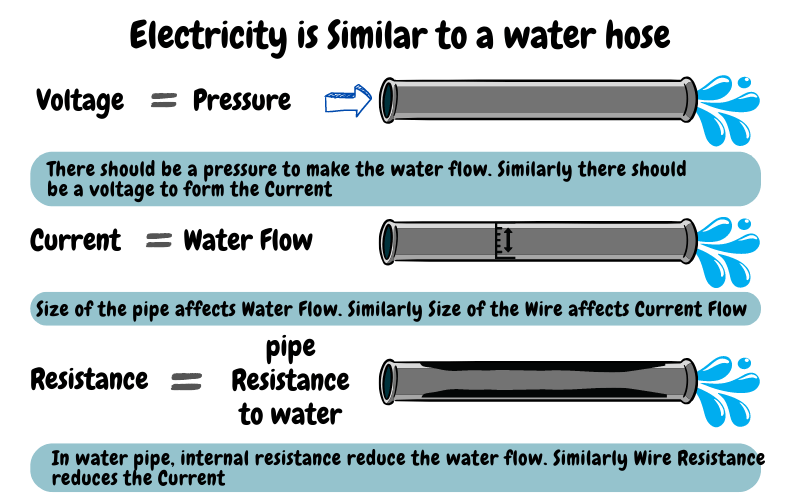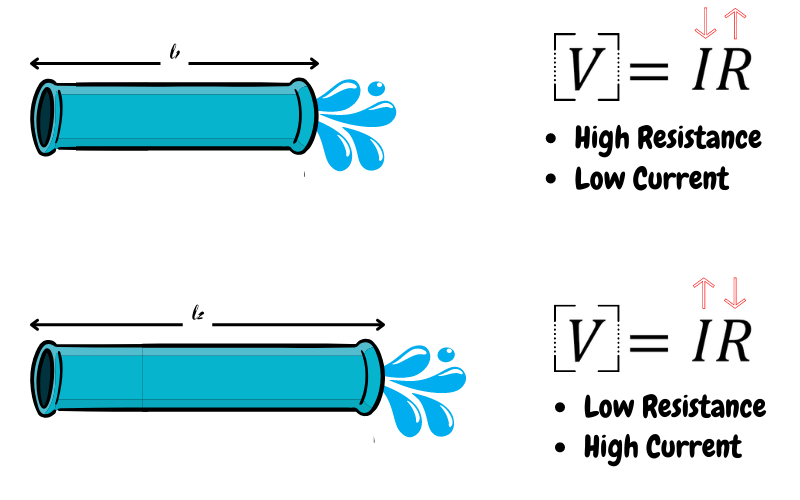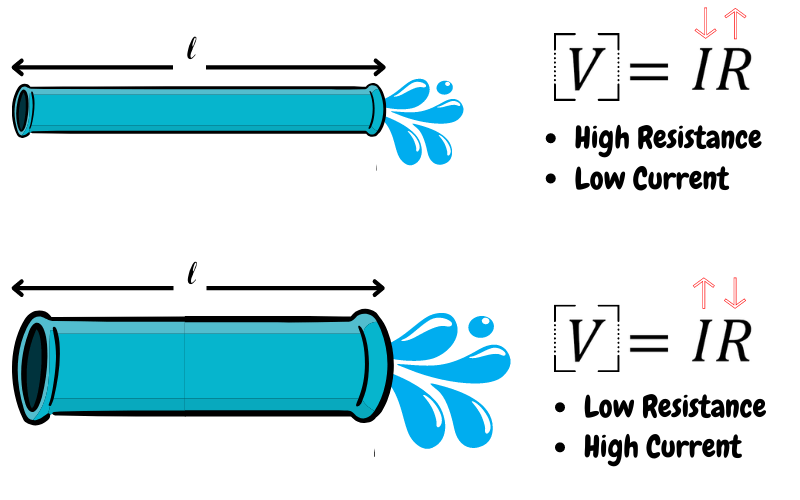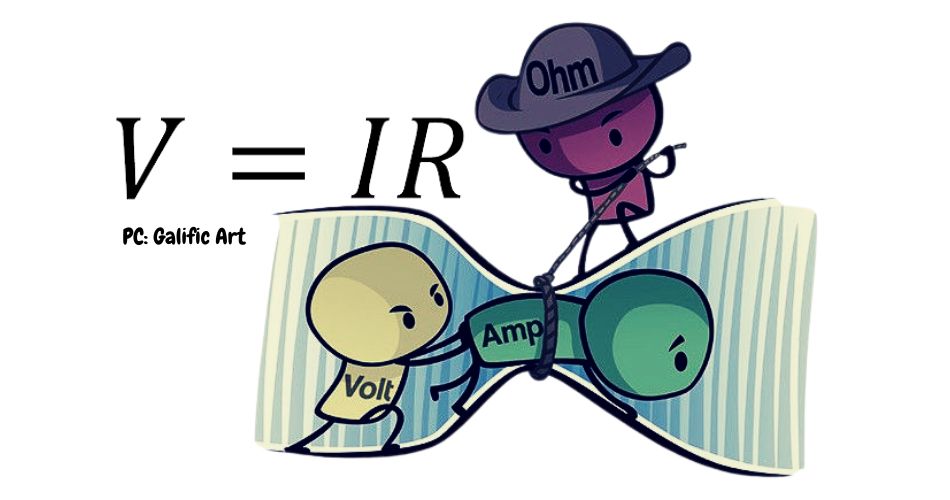Current, Voltage, and Resistance are the barebone basics of Electricity. The famous Ohm`s low equation (V=I*R) is derived from these three terms. So without getting bogged down by theories, let’s get a practical overview of Voltage, Current, and Electrical Resistance. Then you could easily figure out the relationship between them.
Table of Contents
Electrical Current
Electrical current represents the flow of electrons. It tells you the rate at which electrons are flowing. Current is represented by the symbol (I), which is equal to the charge divided by the time.
The unit for current is Amp(A). One Amp is equal to one coulomb of charge that flows per second. If you have five amps of current, then it means that five coulombs of charge flow per second.
The Ampere rating or Amperage means how much electricity is flowing through the wire. The ampere rating of a wire will determine how much cross-section is needed for that wire to conduct electricity.
If a wire is bigger( More cross-section area), you can transmit more electricity through it. So if you have a large appliance that connects to a battery, you need a larger wire to transmit more electricity to it.
If a wire is not large enough to carry a load to power an appliance, it will be given off as heat, and that wire will generate lots of heat and it can cause a fire.
Electrical Voltage
Voltage is the electric potential energy difference per unit charge. The unit for voltage is the volt(V). One volt equals one joule of electric potential energy per one coulomb of charge.
Let’s say you have a 5-volt battery, and it means that each Colomb of charge carries 5 joules of energy. Voltage is essential to form a current in a circuit.
Electrical Resistance
So when the current flows through a conductor, there will be a certain opposition to that current flow, called electrical resistance. Resistance resists the flow of current. Resistance is measured in the units of Ohms represented by the Greek symbol Omega.
Actually, the heat that is produced when a current conducts through a wire is caused by this resistance.
Relationship Between Current, Voltage & Resistance

The water analogy is a famous example to teach how the voltage, current, and resistance act in an electrical circuit. It is similar to how water flows through a water pipe.
We know that electricity travels through wires or conductors, which are pieces of metal. So if we want something to be electrically connected from one point to another, we have to use wires.
This is similar to connecting a water pipe to get water from one point to another. There, water acts as the current, which means that water flow acts as the electrons flow.
Also, if we want to get water to travel through the pipe, we need to exert pressure from one end of the water pipe. In the same way, if we want to conduct current through the wire, we need some kind of pressure which we call Voltage.
Finally, we know that there will be resistance to the water flow through the pipe. In the same way, there will be resistance for the current too, which we call electrical Resistance.
Now, when you think of current, you think of water flowing through a pipe. Practically, if you increase the water pressure through the pipe, the water flow will be high. In the same way, if you increase the voltage of an electrical circuit, the current flow will be high.
- Current – Flow of Electrons
- Voltage – Electrical potential (pressure) applied to make the current ( Electron flow)
- Resistance – Resistance to the current flow
Frequently Asked Questions
Which type of wire will have more resistance? A long wire or a short wire?
When the wire length increases, resistance also increases. So that a long wire will have more resistance than a short wire. Similar to the water analogy, as water has to travel a greater distance in longer pipes, the electrons have a greater distance to travel through long wires.

Which type of wire will have more resistance? A thin wire or a thicker wire?
A thin wire has more resistance than a thick wire. Assume a water pipe that carries water. According to our example, water equals current, water pressure equals voltage and resistance means how hard it is to carry water through the pipe.

If we increase the cross-section of the pipe while keeping the same length and water pressure, it will become easy to carry water through the pipe. So similarly increasing the cross-section of the wire will reduce the resistance of the wires.
Next Up We will discuss Electrical Power (Watts) and Electrical Energy (Watt-hours).
Resources: Build Electronic Circuits
